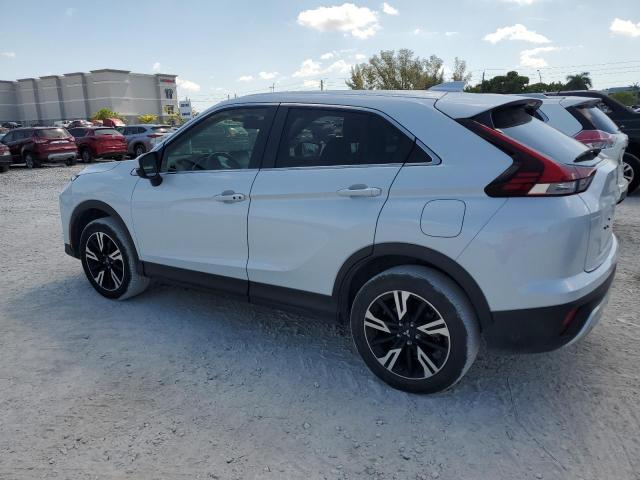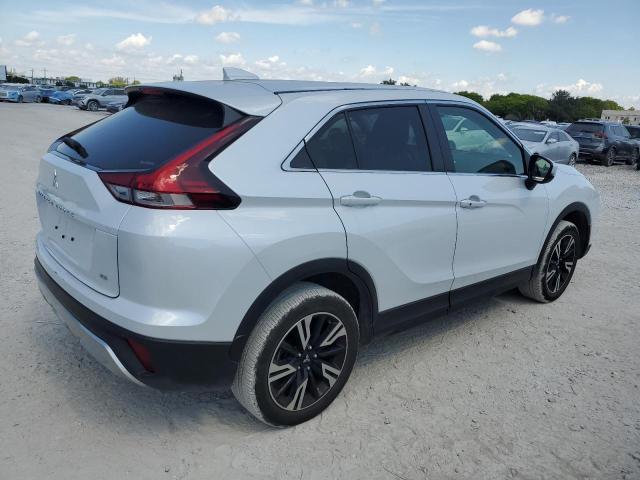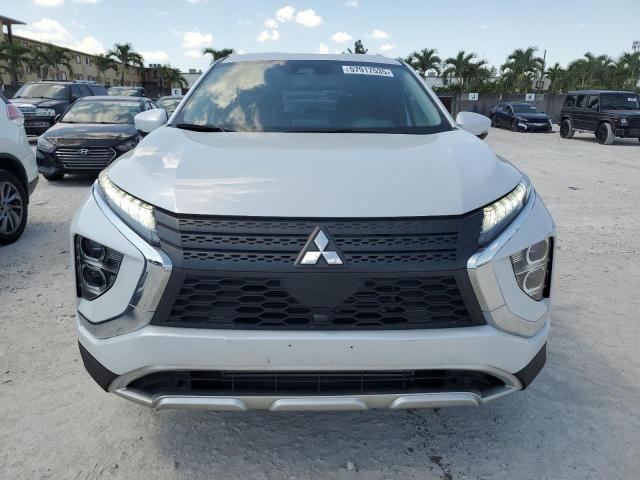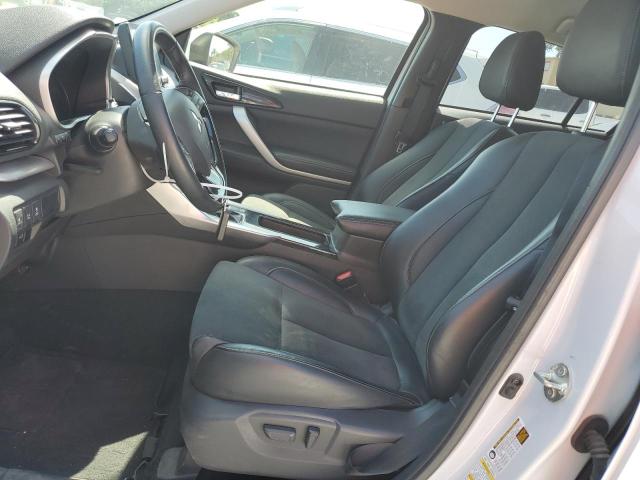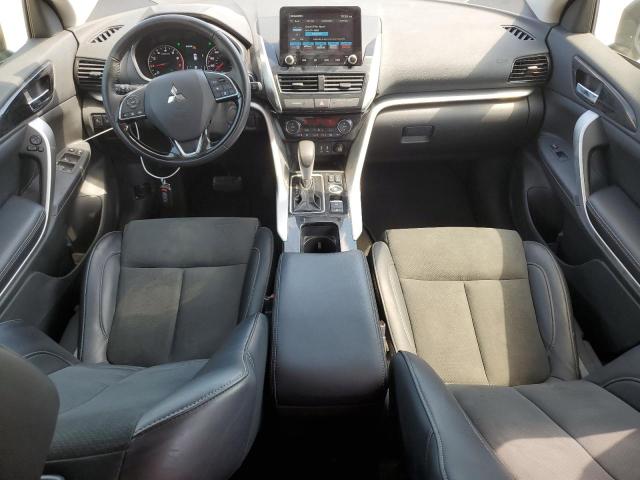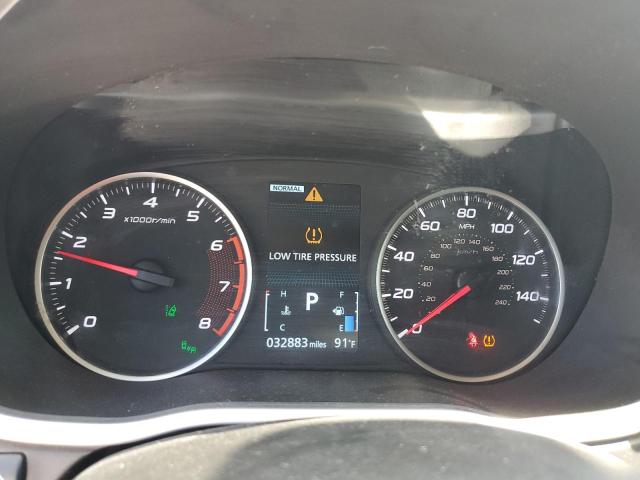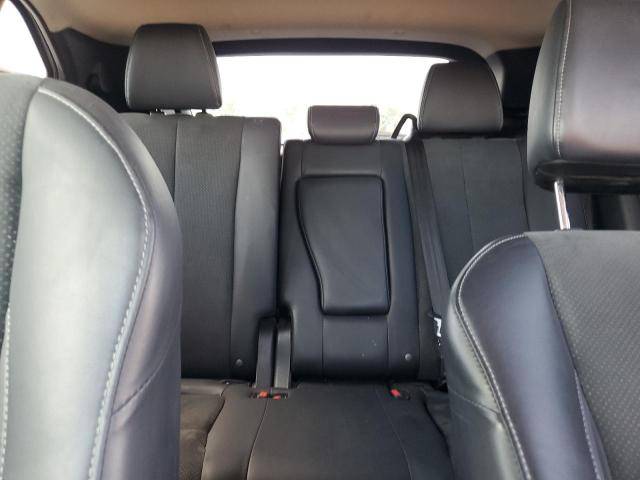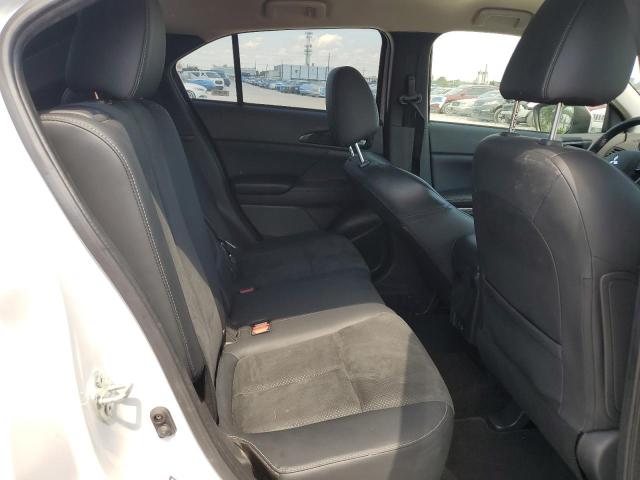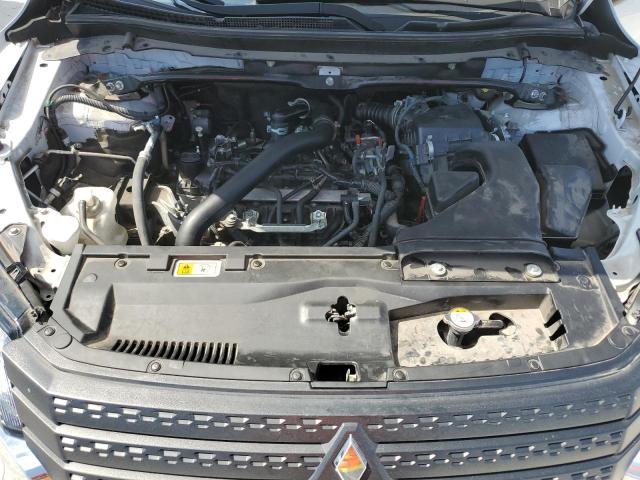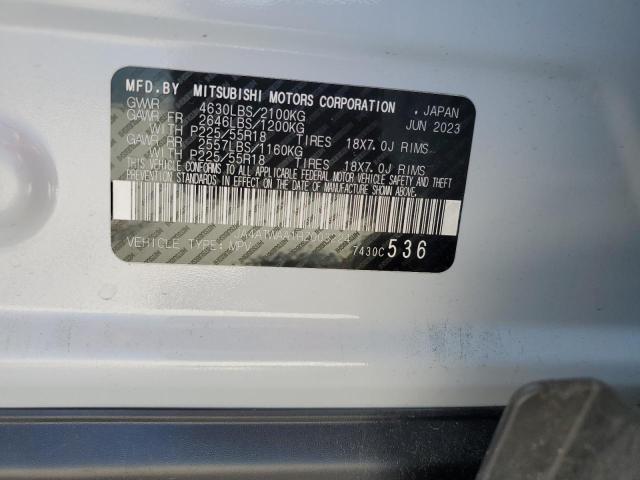2024 MITSUBISHI ECLIPSE CROSS | JA4ATWAA1RZ003224
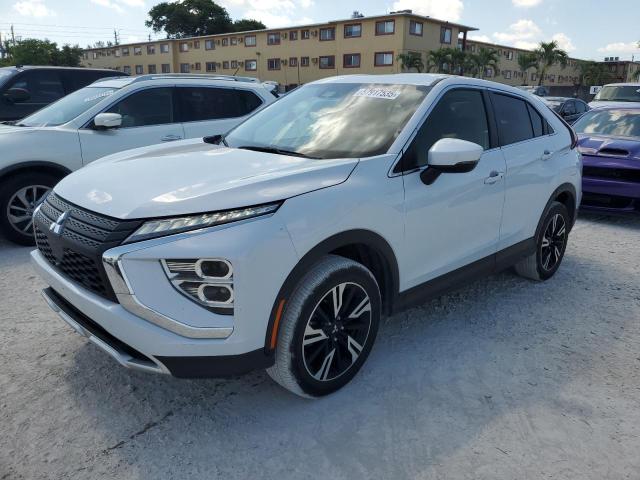 ❯
❯
Specifications
2
~$30,000
Engine: 1.5L turbocharged inline-4
Torque: 250 Nm
0–100 km/h: ~9.5 s
The Eclipse Cross's 1.5L turbocharged engine offers sufficient torque for city driving and light highway cruising, producing 152 hp and 250 Nm. While its 0–100 km/h time of 9.5 seconds won’t challenge sportier crossovers, the turbocharger helps provide smooth mid-range acceleration and respectable fuel economy. Power delivery is managed via a continuously variable transmission (CVT), tuned to mimic traditional gear shifts under hard throttle.
The vehicle’s handling is geared more toward stability and comfort than sharp dynamics. Nonetheless, Mitsubishi’s S-AWC (Super All-Wheel Control) system — adapted from the company’s rally heritage — enhances grip in poor weather and loose surfaces by modulating torque between the front and rear axles. The crossover features a relatively stiff chassis and firm suspension tuning, which help reduce body roll through corners despite its elevated ride height.
While the Eclipse Cross does not compete directly with performance-oriented crossovers, its all-wheel-drive system, tight turning radius, and responsive turbo engine offer a degree of agility that separates it from purely comfort-focused rivals. It carves a niche for drivers who want sporty looks, tech features, and moderate AWD capability in a daily-use package.
Body Styles
The Eclipse Cross is a compact SUV with a distinct fastback profile, characterized by its sharply raked rear window, high beltline, and coupe-inspired silhouette. Its bold styling includes angular character lines, a split rear glass design, and aggressive LED lighting signatures. With a length of around 4.4 meters, it slots between subcompact and compact SUV categories. The sloping roof sacrifices some rear headroom and cargo space in favor of style, while the high ground clearance and wide track give it a planted, confident stance on the road. A facelift in 2022 refined the rear design, removing the controversial split-window and improving cargo access.
Model Name Meaning (Manufacturer)
Mitsubishi revived the “Eclipse” name — originally associated with a sporty coupe — to evoke a sense of dynamism and emotional design. “Cross” was added to signal its crossover utility and SUV practicality. The brand intended the model to bridge the gap between expressive styling and everyday versatility.
Model Name Meaning (Languages)
The term “Eclipse” references a solar or lunar event, symbolizing alignment and rarity, while “Cross” alludes to crossover utility. Together, the name suggests a vehicle that combines distinctive design with cross-category function. In English, the word "eclipse" carries poetic and dramatic overtones, reinforcing the model’s intended visual and emotional impact.
Body & Interior Colors and Rims
Exterior color options include Diamond Red, Lightning Blue, Pearl White, Titanium Gray, and Tarmac Black, with select trims offering contrasting black roof packages for a sportier look. Special finishes like Bronze Metallic and White Diamond give premium appeal. LED accents and chrome detailing enhance the visual drama, particularly on upper trims.
The interior is available in black fabric, leather-appointed upholstery, or two-tone options like black and grey or black and tan depending on market and trim level. Piano black and silver trim inserts dominate the dashboard, and a heads-up display (HUD) and panoramic glass roof are available in premium trims.
Wheel designs range from 16-inch steel wheels on base models to 18-inch machined alloy rims on SEL and GT trims. These alloys come in multi-spoke and twin-spoke designs with gloss black or polished aluminum finishes, depending on market configuration and trim.
Top Expensive Options
- S-AWC All-Wheel Control System: $1,600
- Dual-Pane Panoramic Roof with Power Shade: $1,000
- Mitsubishi Power Sound System with 8 Speakers: $750
- 8-inch Smartphone-Link Display Audio with Navigation: $950
- Adaptive Cruise Control with Forward Collision Mitigation: $800
- Leather-Appointed Heated Front and Rear Seats: $900
- Heads-Up Display (HUD): $600
- LED Headlights with Auto-Leveling and DRL: $650
- Multi-View Camera System: $700
- Roof Rails and Crossbars: $500
vs Competitors
The Eclipse Cross sits between the Mitsubishi Outlander Sport and Outlander, targeting compact SUV buyers seeking bold design and tech features. Compared to the Honda HR-V and Toyota C-HR, the Eclipse Cross offers a more powerful turbocharged engine and standard AWD in more trims. While its rear cargo space is less than rivals like the Subaru Crosstrek or Kia Seltos, it counters with a more coupe-like exterior, unique S-AWC drivetrain, and a high-value standard equipment list. It doesn’t offer a hybrid variant like the RAV4 or CR-V but focuses instead on affordability, distinct styling, and Mitsubishi’s strong warranty coverage. The Eclipse Cross appeals to design-conscious buyers who prioritize looks and snow-capable traction over outright speed or interior volume.
Fun Fact
Despite sharing a name with the original Mitsubishi Eclipse sports coupe, the Eclipse Cross has no mechanical relation to its predecessor. However, Mitsubishi intentionally designed the crossover to echo the coupe’s wedge shape and sporty spirit — a marketing strategy aimed at capturing former Eclipse enthusiasts who now needed a family-friendly SUV.
Lot Details
-
Sale Date30/May/2025
-
Lot Number57917535
-
Sale document
-
Location
-
Odometer32,883 miles (52,920 km)
-
Primary Damage:NORMAL WEAR
-
Fuel
-
Engine Type1.5L 4
-
Transmission
-
Drive Type
-
Color
Final Bid Mitsubishi Eclipse Cross (2024)
$12,600
$13,850
$15,100
Specifications
2
~$30,000
Torque:
0–100 km/h:
The Eclipse Cross's 1.5L turbocharged engine offers sufficient torque for city driving and light highway cruising, producing 152 hp and 250 Nm. While its 0–100 km/h time of 9.5 seconds won’t challenge sportier crossovers, the turbocharger helps provide smooth mid-range acceleration and respectable fuel economy. Power delivery is managed via a continuously variable transmission (CVT), tuned to mimic traditional gear shifts under hard throttle.
The vehicle’s handling is geared more toward stability and comfort than sharp dynamics. Nonetheless, Mitsubishi’s S-AWC (Super All-Wheel Control) system — adapted from the company’s rally heritage — enhances grip in poor weather and loose surfaces by modulating torque between the front and rear axles. The crossover features a relatively stiff chassis and firm suspension tuning, which help reduce body roll through corners despite its elevated ride height.
While the Eclipse Cross does not compete directly with performance-oriented crossovers, its all-wheel-drive system, tight turning radius, and responsive turbo engine offer a degree of agility that separates it from purely comfort-focused rivals. It carves a niche for drivers who want sporty looks, tech features, and moderate AWD capability in a daily-use package.
Body Styles
The Eclipse Cross is a compact SUV with a distinct fastback profile, characterized by its sharply raked rear window, high beltline, and coupe-inspired silhouette. Its bold styling includes angular character lines, a split rear glass design, and aggressive LED lighting signatures. With a length of around 4.4 meters, it slots between subcompact and compact SUV categories. The sloping roof sacrifices some rear headroom and cargo space in favor of style, while the high ground clearance and wide track give it a planted, confident stance on the road. A facelift in 2022 refined the rear design, removing the controversial split-window and improving cargo access.
Model Name Meaning (Manufacturer)
Mitsubishi revived the “Eclipse” name — originally associated with a sporty coupe — to evoke a sense of dynamism and emotional design. “Cross” was added to signal its crossover utility and SUV practicality. The brand intended the model to bridge the gap between expressive styling and everyday versatility.
Model Name Meaning (Languages)
The term “Eclipse” references a solar or lunar event, symbolizing alignment and rarity, while “Cross” alludes to crossover utility. Together, the name suggests a vehicle that combines distinctive design with cross-category function. In English, the word "eclipse" carries poetic and dramatic overtones, reinforcing the model’s intended visual and emotional impact.
Body & Interior Colors and Rims
Exterior color options include Diamond Red, Lightning Blue, Pearl White, Titanium Gray, and Tarmac Black, with select trims offering contrasting black roof packages for a sportier look. Special finishes like Bronze Metallic and White Diamond give premium appeal. LED accents and chrome detailing enhance the visual drama, particularly on upper trims.
The interior is available in black fabric, leather-appointed upholstery, or two-tone options like black and grey or black and tan depending on market and trim level. Piano black and silver trim inserts dominate the dashboard, and a heads-up display (HUD) and panoramic glass roof are available in premium trims.
Wheel designs range from 16-inch steel wheels on base models to 18-inch machined alloy rims on SEL and GT trims. These alloys come in multi-spoke and twin-spoke designs with gloss black or polished aluminum finishes, depending on market configuration and trim.
Top Expensive Options
- S-AWC All-Wheel Control System: $1,600
- Dual-Pane Panoramic Roof with Power Shade: $1,000
- Mitsubishi Power Sound System with 8 Speakers: $750
- 8-inch Smartphone-Link Display Audio with Navigation: $950
- Adaptive Cruise Control with Forward Collision Mitigation: $800
- Leather-Appointed Heated Front and Rear Seats: $900
- Heads-Up Display (HUD): $600
- LED Headlights with Auto-Leveling and DRL: $650
- Multi-View Camera System: $700
- Roof Rails and Crossbars: $500
vs Competitors
The Eclipse Cross sits between the Mitsubishi Outlander Sport and Outlander, targeting compact SUV buyers seeking bold design and tech features. Compared to the Honda HR-V and Toyota C-HR, the Eclipse Cross offers a more powerful turbocharged engine and standard AWD in more trims. While its rear cargo space is less than rivals like the Subaru Crosstrek or Kia Seltos, it counters with a more coupe-like exterior, unique S-AWC drivetrain, and a high-value standard equipment list. It doesn’t offer a hybrid variant like the RAV4 or CR-V but focuses instead on affordability, distinct styling, and Mitsubishi’s strong warranty coverage. The Eclipse Cross appeals to design-conscious buyers who prioritize looks and snow-capable traction over outright speed or interior volume.
Fun Fact
Despite sharing a name with the original Mitsubishi Eclipse sports coupe, the Eclipse Cross has no mechanical relation to its predecessor. However, Mitsubishi intentionally designed the crossover to echo the coupe’s wedge shape and sporty spirit — a marketing strategy aimed at capturing former Eclipse enthusiasts who now needed a family-friendly SUV.

